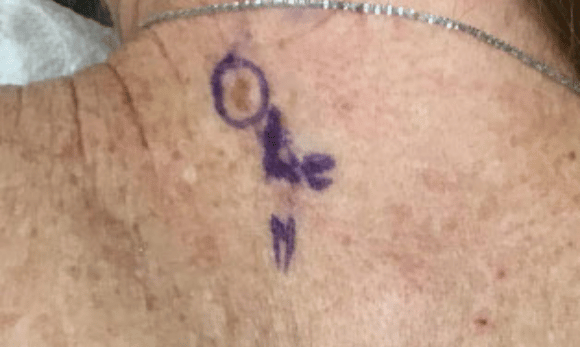What Is Melanoma?
Malignant melanoma is the most serious form of skin cancer. The tumor originates in melanocytes, the cells which produce the pigment that colors our skin, hair, and eyes. The majority of malignant melanomas are black or brown with irregular borders that can become crusted and bleed.
CAUSES
Malignant melanoma is primarily caused by DNA damage from UV radiation, leading to abnormal growth of pigment-producing cells. This is often due to excessive sun exposure or tanning bed use.
RISK FACTORS
Risk factors include fair skin, frequent sunburns, family history of melanoma, and having many or unusual moles. A weakened immune system and a history of tanning also increase the risk.
SYMPTOMS
Melanoma often appears as a new or changing mole with irregular shape, uneven color, and asymmetrical borders. It may be larger than other moles and can itch, bleed, or change over time, signaling the need for medical evaluation.
Melanoma Gallery




FAQs
What is our algorithm for diagnosing malignant melanomas?
A is for Analysis
At Academic Alliance in Dermatology, we analyze the whole patient based on history and detailed family traits. Ideally, we do a 4 generation-tall family tree focusing on all potential cancers, not just melanoma.
B is for Blade Biopsy
We sample suspicious moles to establish the degree of atypia, risk profile and phenotypes. Sometimes we biopsy parents instead of their kids (Biopsy by Proxy).
C is for Color
When examining your skin for melanoma, we don’t just look for black-colored moles, but we also search for any slight discolorations that appear red, slate blue, shiny pink, ash grey and white.
D is for Dermoscopy and Distribution: not just Diameter
The skin has invisible zebra stripes (that is why you get shingles). At Academic Alliance in Dermatology, we have established that certain body stripes, called dermatomes (skin segments) are more prone to develop melanomas. This cutting-edge discovery by Academic Alliance in Dermatology was presented at the World Congress of Dermatology in Milan, Italy, in June 2019 and at the Pediatric Dermatology Research Association meeting in Chicago.
E is for Evolution and Embryology: not just Elevation
Although believed to be caused by the sun, the left side of the body is more prone to melanoma due to embryologic considerations and maldevelopment.
F is for Funny-looking moles and Family
We are one of the few organizations globally whose physicians are able to study up to four generations of a patient’s family members due to their specialized knowledge of genetics, embryology, neonatology, pediatrics and dermatology.
G is for Generations and Genetics
Recognizing that certain genes are responsible for several cancers in different organs, we study information about the genetics of the family across multiple generations and organs.
H is for History
History includes personal, family, professional/occupational, surgical, environmental and social.
I is for Instinct
The patient’s instincts, the doctor’s intuition, and family insight are all critical factors when reaching a diagnosis. Across the four decades our physicians have spent in extensive training and practical experience, they have honed their ability to look and listen.
Is malignant melanoma curable?
If malignant melanoma is recognized and treated early, it is nearly 100% curable. Untreated, the cancer can advance and spread to other parts of the body, where it becomes hard to treat and can be fatal.
Who is at risk of melanoma?
Malignant melanoma may affect anyone at any age. All individuals exposed to sunlight are at risk of developing malignant melanoma, yet fair-skinned people, after years of sun exposure, individuals with a family history of melanoma, and individuals who are immunosuppressed are at a higher risk.
What are common melanoma statistics?
- Melanoma is the most deadly form of skin cancer.
- More than 7,000 Americans will die from Melanoma in 2019.
- In 2019, over 192,000 Americans are expected to be diagnosed with Melanoma.
- Melanoma is the most common form of cancer for young adults 25-30 years old and the second leading cause of cancer death in women ages 30-35.
- Nearly 90% of Melanoma are thought to be caused by exposure to UV light and sunlight. Today, there are nearly 1 million people living with Melanoma.
Visit Academic Alliance in Dermatology
Our team provides thoughtful, expert care for all your skin health needs. We are proud to offer the most advanced general, surgical and cosmetic dermatological services throughout Florida’s West Coast. Your best skin awaits.

